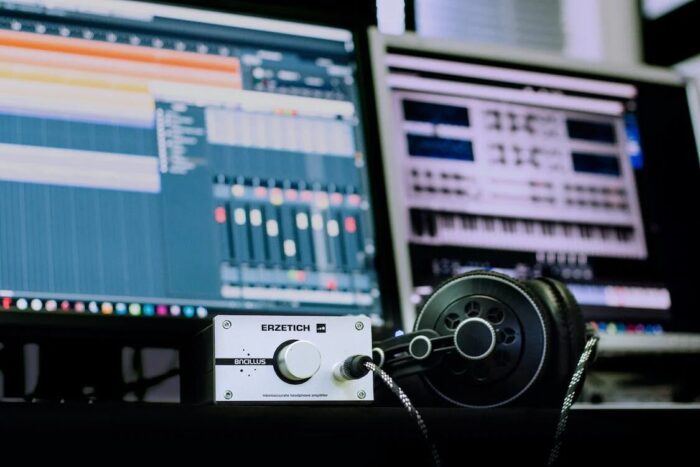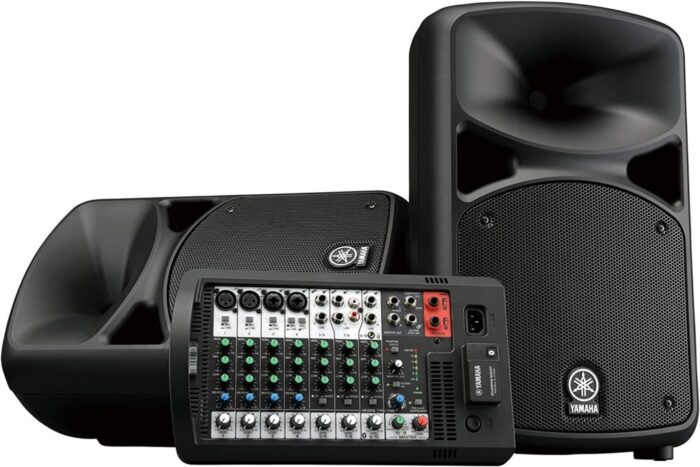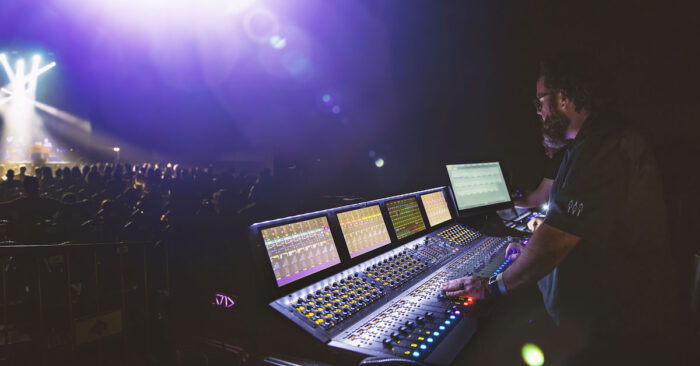
Live sound is complex to set up, and sound mixing also requires a unique set of skills. Learning how to be a sound mixing and live sound setup expert can be valuable for many reasons. There are so many benefits to having this skill set in your quiver, and there are lots of great ways to get started learning about these skills.
This beginner guide will help you get started on the road to learning to set up live sound and perform sound mixing. These skills can be applied to a wide array of different sound setups as well, making the skills versatile and profitable for those who work in the music industry.
Learn Live Sound Skills From Live Courses

No matter how much experience you might have had with sound mixing and setup, there is always more to learn. You can find out so much about the process of mixing live sound and live sound setup by taking live sound courses online. Experienced sound mixers and beginners alike can benefit from these classes that teach you about the basics related to this essential skill.
There are many components to live sound systems, and knowing about all of them and how to use them effectively is key. Without this knowledge, you will be using guesswork to try and create the best possible sound for live events that you might be hosting yourself or that you have been hired to mix sound for. Making sure that you know how to use all of the various parts of a sound system correctly is important for those looking to create quality live sound using a variety of different sound setup arrangements.
The more knowledge that you have in this area, the easier it will be to set up quality live sound for your own personal use. You will also be able to seek jobs in various industries where live sound is a requirement. It’s never too early or too late to grow your skills in sound mixing and setup.
Types of PA Systems

There are various kinds of PA systems that you might be tasked to work on. Knowing more about these various kinds of systems can help you to be prepared for different sound mixing and setup processes. Simple systems will have few components in them, but that does not mean that they do not require skill to set up.
· Personal PA
This is a system that is built for one or two performers. This is usually powered by a modest onboard mixer, an effect or two, and a single powered speaker. There are ways to customize this setup to make the sound higher quality and to aid in sound mixing, but most personal PA setups are very simple and are ideal for solo performers doing things like coffee shop performances.
· All-In-One Systems
These systems are a little like a personal PA, but they are higher-powered and are made to cover a larger space. You might have one or two speakers for this system, a basic mixer, and some speaker stands in this system. This is a common arrangement for mobile rigs, and performers who travel from gig to gig often use these systems.
· Standard PA
This kind of system offers you the kind of sound mixing and setup for live stage performances. This is the kind of sound system that many people are interested in learning to work with. Expect mixers, speakers, monitors, and more when working with a standard PA system.
The Nuts and Bolts of Sound Mixing and Setup

Setup for your sound needs can vary depending upon the components in your system of choice. In the most simple sense, the flow of signal will need to be set up correctly so that the sound can flow from the performer to the microphone, to the mixer, to the speakers, to the audience. Gain staging is also a necessary adjustment during the setup process to allow for the amplifier and speakers to produce sound that is loud but not painful to listen to.
The mixing console is where the nature of the sound being produced is altered. Mixers operate by using channels to the outputs in the system. The use of faders, aux sends, and EQ can impact the way that a performance sounds. Knowing how to use the mixing board correctly is key when it comes to producing sound that is high-quality and enjoyable to be exposed to.
The position of the speakers, mics, and amps in your sound setup will also have a big impact on sound. From the delivery of sound to the farthest reaches of the room to preventing feedback, the positioning of the various parts of your sound system matters. The more people you have on stage and the more components in the system, the more delicate the balance necessary to create quality live sound.
All of these parts of mixing and setting up live sound require training and skill. You can learn a lot by working in the sound industry, but if you have never been trained to properly use the various components of a sound system, you could be making errors that lead to reduced sound quality.
Learning how to Setup and Mix Live Sound is Important

If you have been interested in working in an industry that requires that you be able to set up and mix sound or you are interested in managing your own sound quality needs for personal performances, you need to be sure that you learn all about sound setup and mixing. The basics that are listed in this guide only scratch the surface of the knowledge that is necessary to be a skilled and authoritative sound expert.
Taking courses related to the setup and mixing of sound is a great way to make sure that you know your way around this important job and that you can create the best sound possible for the events that you are hired to work or manage.
















